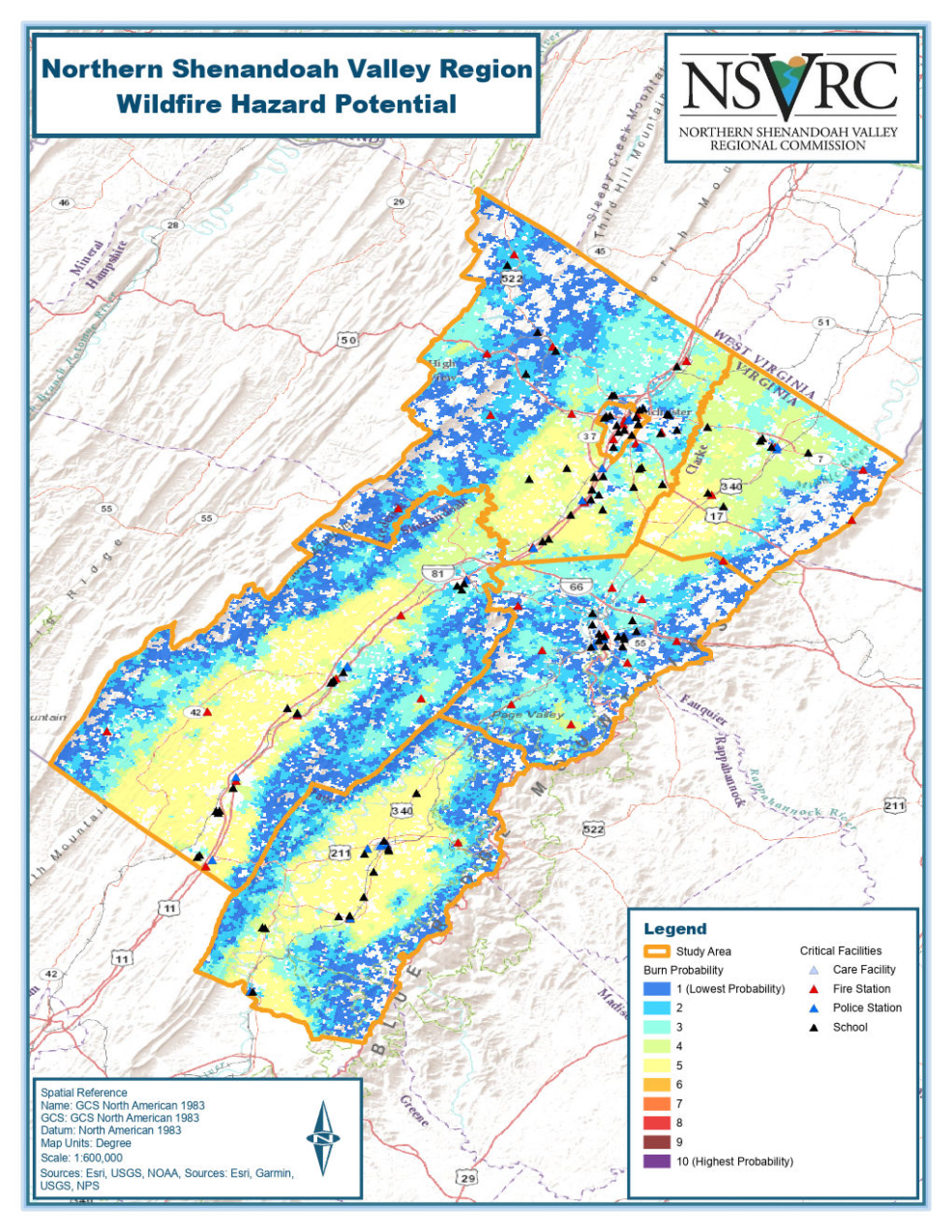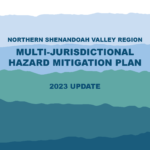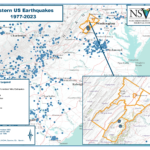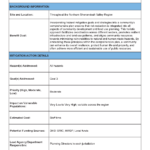In 2023, EPR worked with the Northern Shenandoah Valley Regional Commission (NSVRC) to update its Multi-Jurisdictional Hazard Mitigation Plan. This document, required by FEMA to access certain disaster and mitigation funding, aims to create a more resilient regional community by:
- Reducing or preventing loss of life and property during natural hazard events such as flooding, severe storms, wildfires, and pandemics;
- Helping secure federal and state grant funding for specified mitigation actions;
- Providing a reference for decisions on future growth, public investment, and other planning efforts; and
- Lessening the need for emergency response and recovery when natural disasters strike.
Our team conducted a thorough update of the region’s 2018 plan, focusing on creating a more user-friendly document while retaining a high level of detail and achieving an integrated approach to
hazard mitigation planning. The team overhauled the plan’s Hazard Identification and Risk Analysis (HIRA) section by creating a new list of possible hazards, forecasting and modeling the probability of those events occurring in the future using FEMA’s HAZUS software, assessing the impact of climate change on future hazard events, and calculating potential losses of life and property in the event of a disaster.
We further enhanced the 2018 plan by adding pandemics, harmful algal blooms, hazardous material incidents, and mass evacuation events as potential hazards that could impact the region. Additionally, EPR conducted an in-depth analysis of high hazard potential dams (HHPDs) in the region including dam break inundation zone maps and precise estimates of how many people, homes, businesses, and critical facilities could be impacted in the event of dam failure.
The updated plan also includes an expanded mitigation action plan with 75 detailed mitigation strategies, a list of potential funding sources for each strategy, and a thorough description of the benefits and costs of each strategy. Additionally, the team reformatted the plan into an attractive, accessible new layout in InDesign with all-new maps created by our GIS specialists.
To become truly resilient, we believe localities should incorporate hazard mitigation principles into local codes and ordinances, capital budgeting, development review processes, regional planning efforts, and day-to-day government administration. Our team developed strategies to help the Northern Shenandoah Valley Region integrate mitigation actions into these operations. Additionally, we created local executive summary versions of the plan for each NSVRC jurisdiction. These abridged documents include information relevant to each locality for ease of access and greater readability, and they will help each jurisdiction incorporate the hazard mitigation plan into other local planning mechanisms.
The plan update was completed on an accelerated five-month timeline while working with a team of emergency managers representing each of the region’s local jurisdictions, as well as through a stakeholder outreach program that included public surveying and individual outreach to utility providers, community service organizations, healthcare providers, and many more, setting a new community engagement benchmark for the Northern Shenandoah Valley Regional Commission.
EPR is passionate about helping its partner communities become more resilient as they face an uncertain future. We look forward to working with localities and regional organizations seeking to enhance their resiliency through forward-thinking, data-driven approaches focused on community collaboration.




